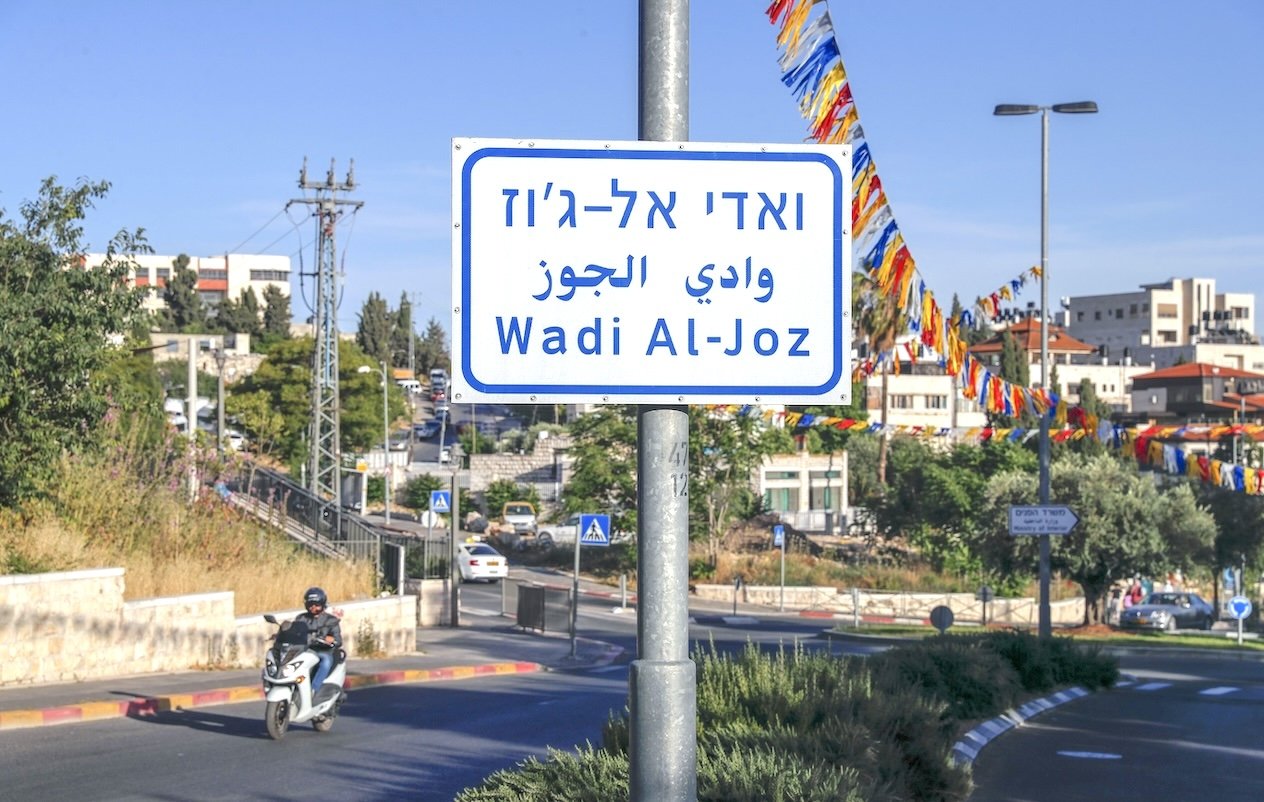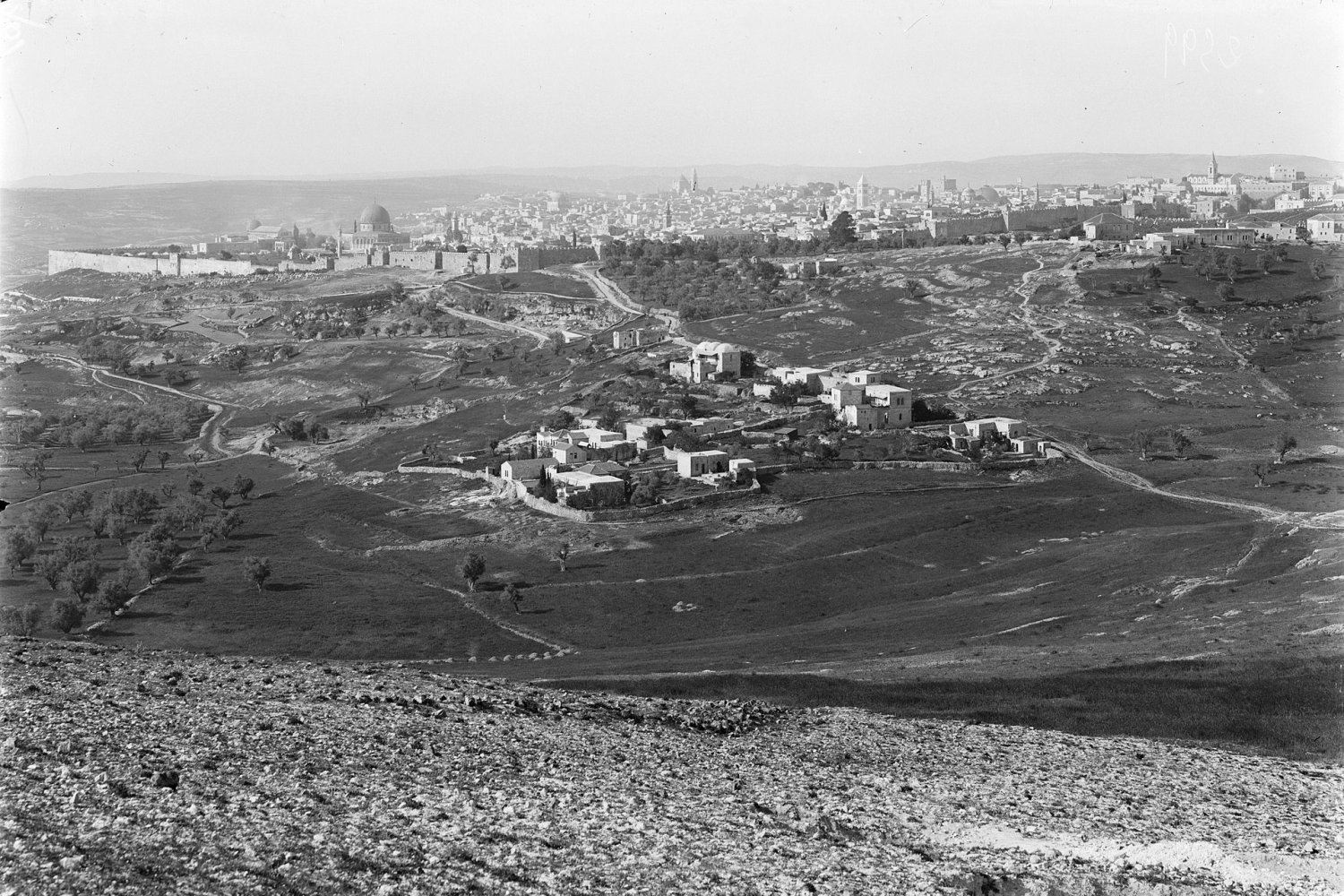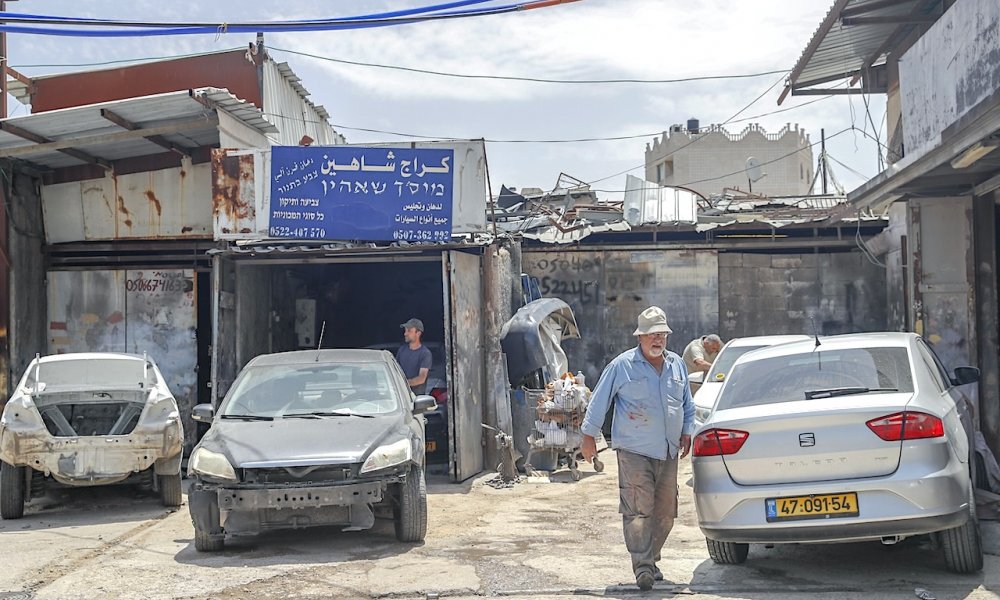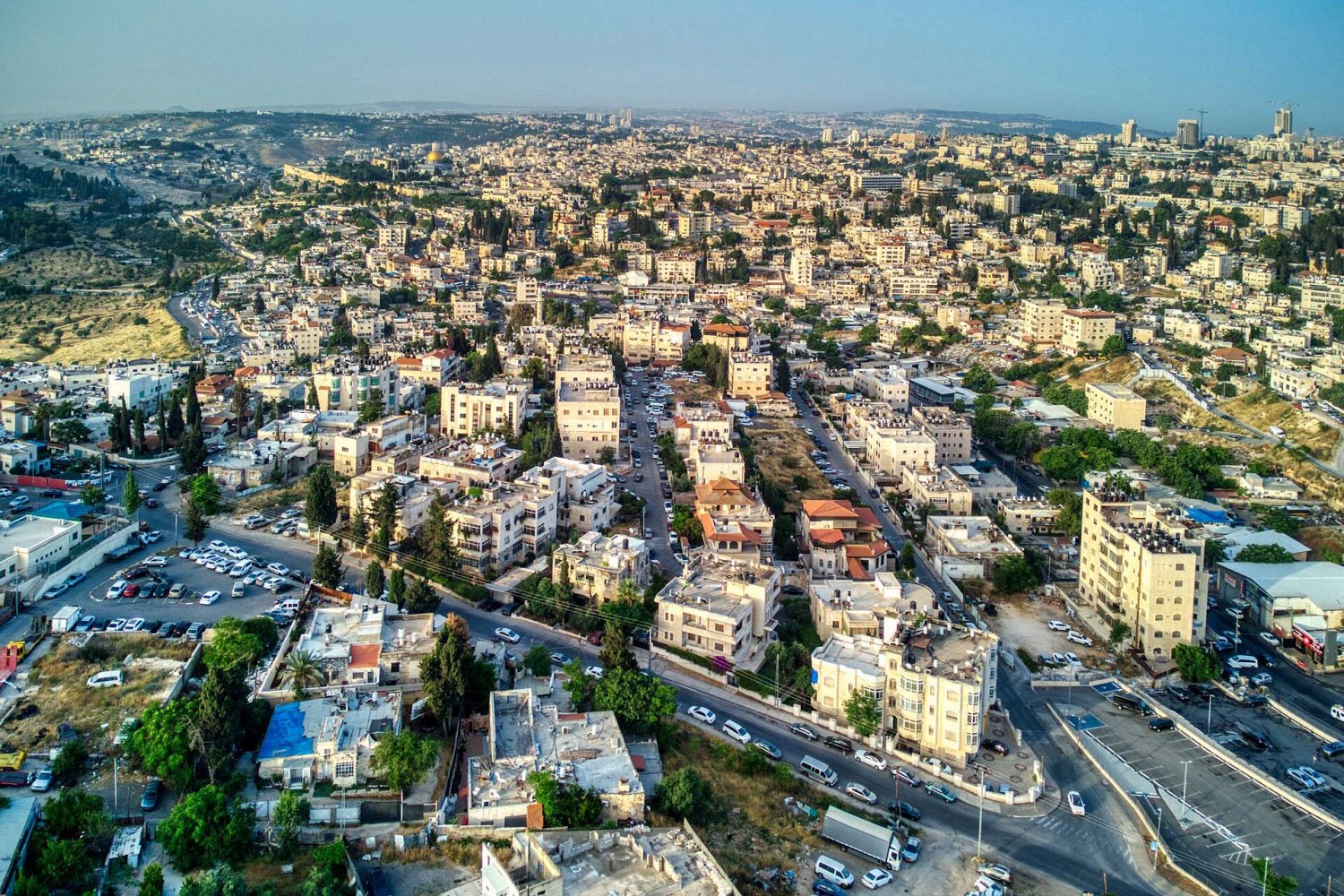Affluent families in the Old City administered these agricultural estates, lining the countryside with their fortified summer residences. The largest and oldest landholders in Wadi al-Joz, the Khatib family, built its residence about 400 years ago. According to the family’s late 20th century self representation, the Khatibs settled in Jerusalem sometime in the 14th century. To underline its rootedness in al-Quds, the family uses the descriptor kinani jama‘i to distinguish itself from other families with the same surname (e.g., the Khatibs of Hebron and ‘Izariyya). According to Amin Khatib, the family—a collection of “teachers, scientists and imams”—administered its lands and mills from their residence at Bab al-Hadid, next to Haram al-Sharif. After the earthquake of 1926, the family permanently relocated to Wadi al-Joz.
Another landed family that was instrumental in the modern development of the valley, building a series of houses on the slopes of Wadi al-Joz in the first quarter of the 20th century, were the Hidmis. In contrast to the Khatibs, the Hidmis were relative newcomers to the city. The family patriarch had come to Palestine (along with his sister) in 1831 as part of Ibrahim Pasha’s expedition. He served as the governor of Hebron until he was forced to leave in conjunction with the uprising of 1834. Thereafter, the merchant family settled in the Old City of Jerusalem and began to establish local roots. The patriarch not only married into a Jerusalem family but also changed the family’s name. According to family legend a waly (Muslim holy man) appeared to a woman of the family and promised that her son would be cured of the measles if the family would change its name from Mu‘awwad to Hidmi, the name of a waly buried in Jabal Khalil (hills of Hebron).
Parts of the Hidmi family left the Old City and moved to Wadi al-Joz as early as 1870, renting their Old City properties to poorer relations. According to Arafat Hidmi, in this century landowners in Wadi al-Joz hired villagers from Al-Thuri, Hizma, Anata, and ‘Isawiyya to work as day laborers on their lands, returning to their villages at the end of the day.
Wadi al-Joz took its present shape in the years between the 1948 and 1967 wars. Both its proximity to the Old City and its relatively sparse character appealed to people, particularly refugees and rural migrants, looking for a place to live in the city. In 1948 refugees from West Jerusalem resettled in Wadi al-Joz. In the words of Ziad Zayda, a merchant at Bab al-Amud, “We came to Wadi al-Joz as refugees, it was one of the few empty areas around the Old City in 1948.” The mukhtar of Namamra, a subdivision of the West Jerusalem Palestinian neighborhood of Baqa, fled to Wadi al-Joz together with his family in 1948. A politics of location continues to inform belonging in Wadi al-Joz. To ask for the mukhtar in the streets of Wadi al-Joz, one is invariably referred to Rafiq Namari. These older reference systems complement the diversity and complexity of the urban transformation that Wadi al-Joz has experienced since 1948.








